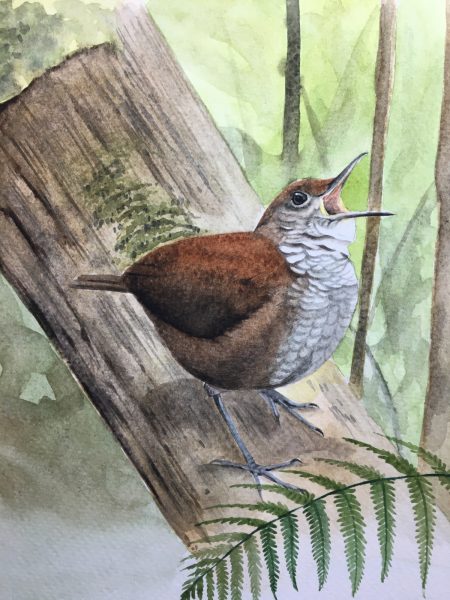Nature's sweet music
University of Texas at Austin
When it comes to keeping time, an unassuming species of songbird is on a par with professional musicians, according to new research led by scientists at The University of Texas at Austin.
The
study is the first to investigate natural time-keeping ability of an animal in
the wild rather than under observation in the lab, with scientists examining
the song of the scaly-breasted wren, a small brown bird in Central and South
America known for its whistle-like chirps.
The
song of the wild birds demonstrated better time-keeping skills than those of
mammals and birds trained in captivity. The results underscore the importance
of studying animals in both the lab and in nature to get an accurate view of
their abilities, said lead author Carlos Antonio Rodriguez-Saltos.
"We
should use the power of biodiversity to understand these things while we still
can," said Saltos, who conducted the research when he was a postdoctoral
researcher at the UT Jackson School of Geosciences.
The
results were published in Animal Behaviour. Jackson School
Professor Julia Clarke co-authored the study.
Birds
don't have songbooks. But some species sing the same tune, chirping notes in an
identifiable pattern. For the scaly-breasted wren, the pattern goes like this:
an opening blast of chirps followed by alternating intervals of chirps and
pauses, with the pauses between each chirp getting progressively longer.
Rodriguez-Saltos became familiar with the song of the wren as an undergraduate student in Ecuador when his ecology professor taught him how to identify the distinct pattern among the din of rainforest sounds. Years later, he realized that a unique feature of the wren's song -- the steadily growing pauses between the chirps -- presented a unique opportunity to delve into the bird's time-tracking abilities.
"It
is a really remarkable change from short intervals to long intervals in the
same song," Rodriguez-Saltos said.
The
pauses between each chirp grow in a predictable way -- lengthening by about a
half second each time. After the pause reaches about 10 seconds long, the birds
then repeat their song from the top.
In
laboratory experiments, most animals -- including humans -- have difficulty
determining how much time has passed after just a second or two. In general,
the longer an interval of time, the worse animals are at estimating its
passage.
But
for the wild wrens, 43% of the songs (10 out of the 23 songs that met the
requirements for evaluation) consistently kept time for the duration of the
song, with the intervals holding the established pattern even as the pauses
increased in length.
For
two of those songs, the accuracy of the wren was higher than that of the
average professional musician.
However,
some of the songs had different outcomes. One became less precise over time,
following the trend observed in most laboratory experiments. The
less-than-perfect performances could come down to a matter of practice, with
wrens learning to sing in part by mimicking more experienced birds,
Rodriguez-Saltos said.
Susan
Healy, a professor who studies bird behavior at the University of St Andrews
and who was not part of the study, said that the paper raises questions about
how timing might play into the mating displays of wrens.
"If
females are especially interested in a male's ability not just to produce the
right notes but also the timing of their production, then the pressure is
on," she said.
The
birdsong analyzed in the study came from field recordings. Some were made by
Rodriguez-Saltos and co-author Fernanda Duque in Ecuador. Others came from bird
aficionados who uploaded recordings of the wren's song online. The data on
timing in other animals came from other studies.
Clarke,
an expert on evolution of bird vocalization in both living and extinct species,
said the research demonstrates the importance of turning to nature to study
birds in their natural environments.
"We
take wild birds for granted, and natural populations are dwindling, so this is
urgent," she said. "This case shows how studying birds can provide
huge new insights into cognition and timekeeping."
The
research was funded by a Howard Hughes Medical Institute Science Education
Grant.
Story
Source:
Materials provided
